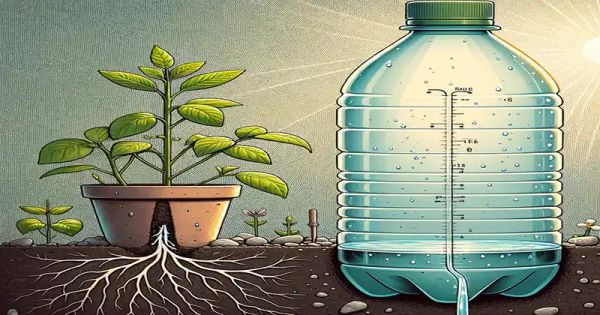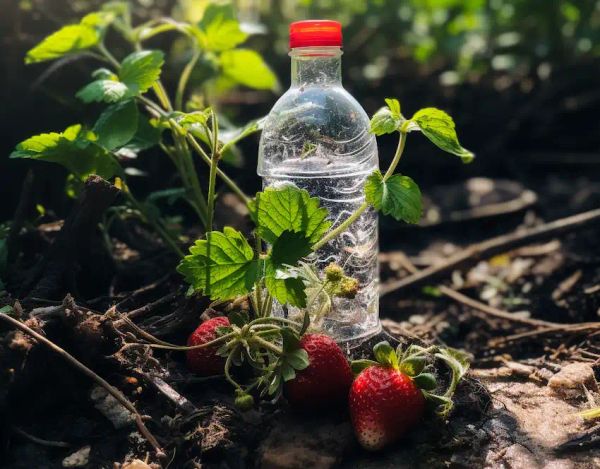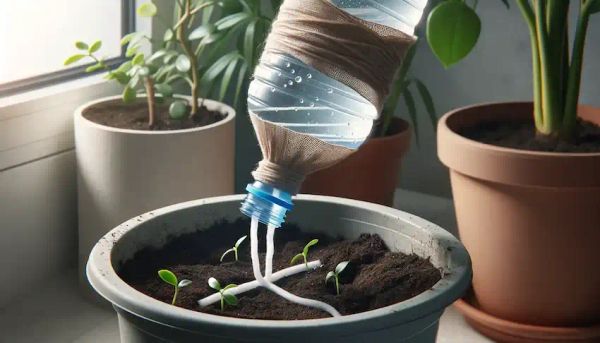If you’re a gardening enthusiast on a budget, we have the perfect solution for you. In this article, we will show you two simple and effective DIY methods to water your plants using items you already have at home. Not only will these methods save you money, but they are also eco-friendly, ensuring your plants get the water they need without any waste.

Method 1: Slow-Release Watering Using a Buried Plastic Bottle
Picture this: a lush green garden without the need for constant watering. With a buried plastic bottle, you can achieve just that. Here’s what you’ll need:
- A large plastic bottle (a 2-liter bottle works well)
- A marker
- A sharp tool (such as an awl or heated iron rod)
- Water
Follow these steps:

- Prepare the Bottle: Clean the bottle and remove any labels. Use the marker to mark two lines on the bottle – one roughly 15 centimeters from the bottom and another 10 centimeters from the top.
- Create Water Outlet: Using the sharp tool, make a small hole about 7 centimeters from the bottom of the bottle.
- Fill the Bottle: Fill the bottle with water up to the lower mark and tighten the cap.

- Place the Bottle: Dig a hole near the plant and bury the bottle up to the marked line with the hole facing the plant.
- Final Step: Fill the bottle completely, close the cap, and cover it with soil, leaving the neck exposed.
Advantages of this method include efficient water use, reducing the need for frequent watering, and making it perfect for vegetable gardens and outdoor plants.
Method 2: Wicking System with a Plastic Bottle and Fabric/String
Another affordable and straightforward method to keep your plants hydrated is by creating a wicking system. Here’s what you’ll need:
- A plastic bottle
- Cotton fabric or a thick cotton string
- Water
- A sharp tool for making a hole
Follow these steps:
- Prepare the Bottle: Clean the bottle and make a hole in the cap.
- Thread the Fabric/String: Cut a piece of fabric or string and thread it through the cap, ensuring it’s long enough to reach the soil.
- Fill and Seal: Fill the bottle with water, then replace the cap with the fabric/string, making sure it’s saturated.
- Position the Bottle: Place the bottle cap side down in the soil near the plant, with the fabric/string extending into the soil.
Advantages of this method include direct water delivery to the roots, making it suitable for indoor and outdoor potted plants, and its low maintenance.
These two DIY methods offer a sustainable and cost-effective way to water your plants. Whether you have a vegetable garden or potted plants, these solutions are perfect for dry spells or when you’re away from home. By using simple materials like plastic bottles and fabric, you’re not only conserving water but also contributing to the environment.
So, why spend money on expensive watering systems when you can easily keep your plants healthy and hydrated without any additional cost? Try these methods and see the difference it makes in your garden!




